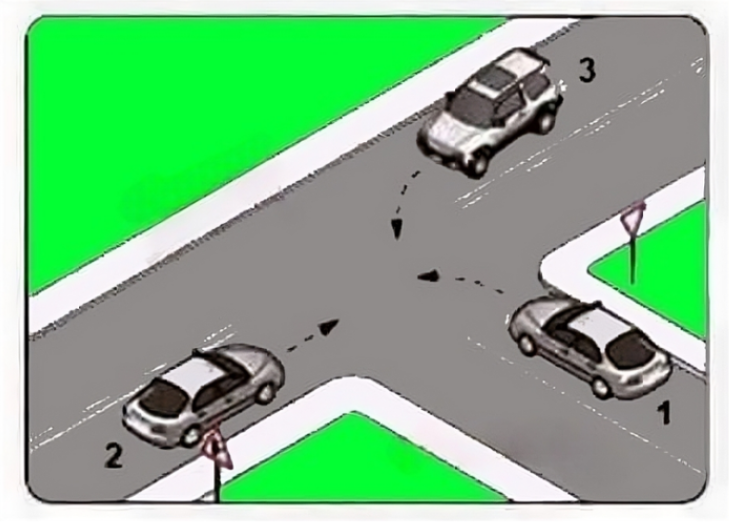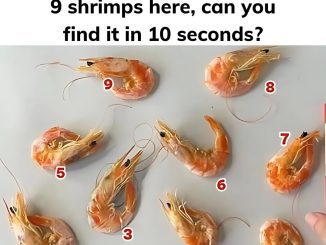Traffic puzzles are more than just a test of logic—they’re a practical exercise that enhances road safety awareness. In this scenario, three cars—numbered 1, 2, and 3—are at an intersection, each waiting to move. But who has the right of way? The answer lies in the details. Let’s break it down step by step and understand the traffic rules that dictate the correct order.

Why Traffic Puzzles Matter
Traffic puzzles mimic real-world driving situations, encouraging you to think critically about road signs, right-of-way rules, and driving etiquette. Not only do they sharpen your decision-making skills, but they also prepare you for potential on-road challenges. Let’s use this puzzle as a fun yet informative way to master intersection logic.
Common Missteps in Solving Traffic Puzzles
Before we dive into the solution, it’s important to understand why these puzzles often trip people up. Here are the most frequent mistakes:
Overlooking Traffic Signs
Many focus solely on the cars’ positioning without noticing the yield or priority signs that dictate the right of way. Signs are key to solving these puzzles correctly.
Relying on Assumptions
People sometimes assume rules like “the car on the right always moves first” apply universally, which is not always the case.
Misinterpreting Priority Rules
Failing to distinguish between roads of differing priorities or misunderstanding the “right-hand rule” can lead to errors in judgment.
By recognizing these pitfalls, we can approach the puzzle with clarity and confidence.
Step-by-Step Breakdown: Who Moves First?
Let’s solve the puzzle logically.
Step 1: Assess the Traffic Signs
The image shows three cars at an intersection, with the following details:
- Car 2 is on a priority road, as indicated by the triangular yield signs facing Cars 1 and 3.
- Cars 1 and 3 are at yield signs, meaning they must allow vehicles on the priority road to pass first.
Since Car 2 is on the priority road, it moves first.
Takeaway: Car 2 has the right of way and goes first.
Step 2: Determine the Next Move
After Car 2 clears the intersection, we’re left with Cars 1 and 3. Both are at yield signs, so we must apply the “right-hand rule,” which states that when two vehicles face the same conditions, the car on the right has priority.
- Car 3 is to the right of Car 1, giving it the next turn to move.
Takeaway: After Car 2, Car 3 moves next.
Step 3: The Final Vehicle
At this point, only Car 1 remains. With no other vehicles to yield to, Car 1 proceeds through the intersection.
Final Order: The cars move in this sequence: 2 → 3 → 1.
Why This Order Is Correct

The solution hinges on two fundamental principles:
- Traffic Signs Dictate Priority
Car 2’s position on the priority road gives it precedence over Cars 1 and 3, which must yield. - The Right-Hand Rule Resolves Ties
Between Cars 1 and 3, the vehicle on the right (Car 3) takes priority.
By combining these principles, the puzzle’s logic becomes clear and consistent.
The Importance of Attention to Detail
This puzzle underscores the significance of small details—like traffic signs and vehicle positioning—in determining the correct order of movement. In real-life driving, these nuances ensure safety and prevent accidents. Ignoring or misinterpreting such details can lead to dangerous consequences.
Practical Tips for Solving Similar Puzzles
Want to become a master of traffic puzzles? Here’s how:
- Always Check for Signs
Yield, stop, and priority signs are the first clues in determining who moves first. - Understand the Right-Hand Rule
When no signs or signals are present, give way to the car on your right. - Stay Calm and Analyze the Scenario
Rushing to conclusions often leads to mistakes. Take a moment to think through the situation logically. - Apply Real-World Knowledge
These puzzles aren’t just about rules—they’re a reflection of real-world driving scenarios. Treat them as practical exercises to improve your road sense.
Engage: What’s Your Answer?
Did you guess the correct order? If not, what threw you off? Share your thoughts in the comments! Challenge your friends with this puzzle and see if they can solve it as logically as you did.
Conclusion: Mastering Traffic Logic
Traffic puzzles like this one are more than just a brain exercise—they’re a tool to sharpen your awareness of road rules and decision-making skills. By analyzing signs, applying the right-hand rule, and approaching each scenario step by step, you can solve even the trickiest intersections with ease.
Remember, whether on paper or the road, the key to success lies in the details. Keep practicing, and you’ll become a traffic puzzle pro in no time. Drive safe and happy puzzling!


